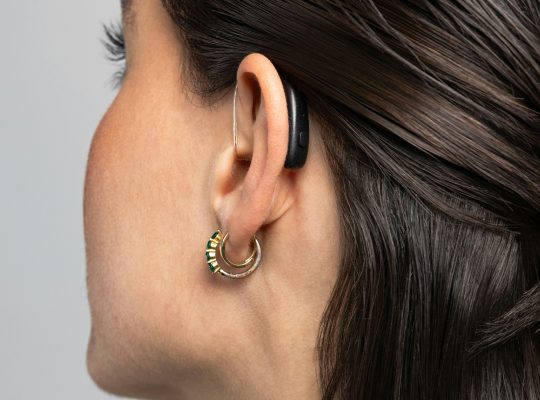Have you ever heard a hearing impaired person say, “Turn on the light so I can hear you better!” and thought, What does light have to do with hearing? Well, much more than you might think! In fact, sight and hearing are close friends in processing speech and sound. In this blog, we dive into the world of hearing, body language and why a well-lit room can really help with communication.
What does light have to do with hearing?
People with poorer hearing often use more than just their ears to follow conversations. They rely on visual cues such as facial expressions, mouth movements and body language to complete the message. In a dark room or in poor light, this becomes a lot more difficult. This is why a person with hearing loss can literally “hear better” when the lights are on.
Consider:
🔹 Lip reading – Subconsciously, you pick up a lot from mouth movements.
🔹 Facial expressions – A smile, a frown or raised eyebrows give additional context to words.
🔹 Hand gestures and body language – What someone does with their hands or how they move sometimes says as much as words.
For someone with hearing loss, all that visual information is incredibly important to understanding a conversation properly.
Lip reading – The secret superpower of hearing impaired people
Lip-reading is something many hearing-impaired people do (unconsciously). Words like “tree” and “cake” may sound completely different, but try saying them without sound in front of a mirror. The mouth movements are quite similar!
In a well-lit room, lip-reading is much easier, allowing a person to better follow what is being said. But when it’s dark or when shadows fall across someone’s face, it becomes quite a puzzle. And then confusion, miscommunication and a lot of “What are you saying?” moments ensue.
How our brain complements sound with images
Our brain is a great problem solver. When a hearing impaired person doesn’t hear a word correctly, the brain fills in the missing information with what it does see and know. This is called the McGurk effect: what you see can literally affect what you hear.
For example, if you see someone say “ba” but you hear “da,” your brain will combine the two and may perceive something completely different. This just proves how important sight is to communication!
Situations where light makes a difference
Now that we know that hearing-impaired people need visual support, it makes sense why good light helps with understanding conversations. But when do you notice this most?
✅ During dinners or get-togethers – Candlelight is cozy, but a disaster for communication. Turn on a light!
✅ In crowded rooms – Lots of background noise? Eye contact and lip reading help tremendously.
✅ At parties or gatherings – The more people, the harder it becomes to follow one conversation. Good light makes it easier to see facial expressions and mouth movements.
✅ Video calls – Zoom and Teams are useful, but if someone is poorly lit, lip reading becomes a challenge.
Tips for communicating better with a hearing impaired person
Want to help someone with hearing loss understand you better? Here are a few simple but effective tips:
💡 Provide good light – A simple desk lamp or ceiling lamp can make a world of difference.👀 Make eye contact – Don’t talk facing the wall or while walking away.
👄 Speak clearly and calmly – But don’t overdo it, excessive articulation actually makes it more difficult.
📏 Keep a normal distance – Too far away makes it difficult to see mouth movements. Too close becomes uncomfortable.
🚫 Don’t hold your hands in front of your mouth – This blocks lip-reading.
🎧 Avoid background noise – Turn down the TV or move to a quieter place.
By making these small adjustments, communicating for the hearing impaired becomes a lot more pleasant.
But … why do hearing people never suffer from this?
Good question! People with normal hearing can often have conversations in the dark or in noisy environments without difficulty. That’s because they don’t rely on visual support. Their brains automatically fill in any gaps in sound based on context and experience.
For the hearing impaired, it works differently. They often already have difficulty processing certain frequencies or sounds. As a result, they have to rely more on lip-reading and body language to complete the message.
So a well-lit room is not a luxury, but a necessity for someone with hearing loss!
Conclusion – Light really does help you hear better
So the next time someone says, “Please turn on the light so I can hear you better,” you’ll know why. Hearing and sight work together to understand conversations.
By ensuring good lighting, clear speech and minimal background noise, you help hearing-impaired people have smoother conversations. And let’s face it – a well-lit room is nicer for everyone, right?
So: lights on and talk! 💡👂😃








